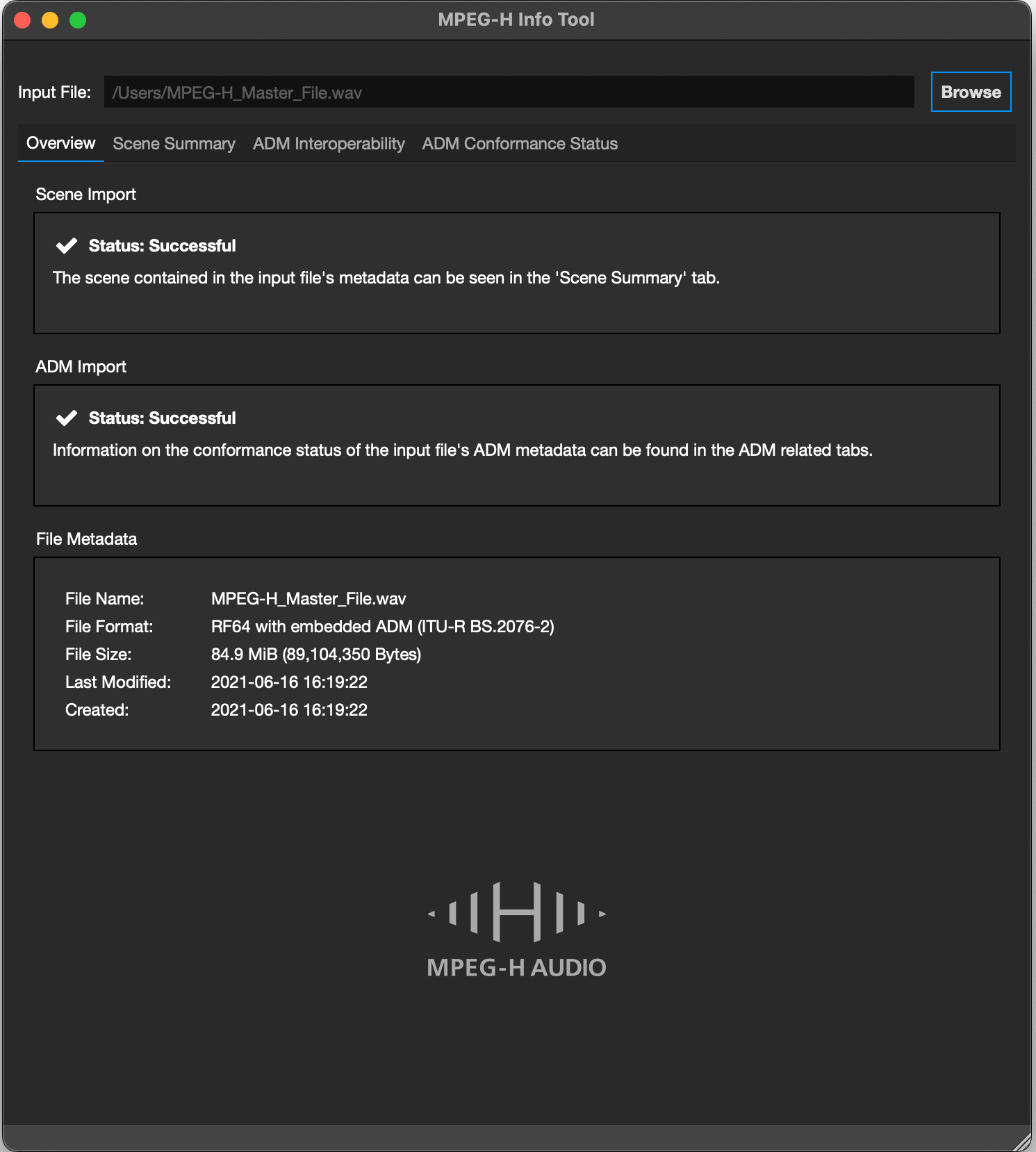The Audio Definition Model (ADM) according to ITU-R BS.2076 specifies a method for the description of many audio content types (including channel-, object-, and scene-based representations of immersive and interactive audio experiences) in a format based on Extensible Markup Language (XML). This ADM specification defines supported elements, sub-elements, and attributes with constraints on data types and values as well as requirements for relationships between elements. Interoperability in ADM-based ecosystems is achieved through specific ADM profiles. They are used to define the additional requirements that make ADM metadata compatible. The MPEG-H ADM Profile, for instance, enables native interoperability with the MPEG-H Audio system as defined in ISO/IEC 23008-3. This means that files from independent Next Generation Audio (NGA) content production and distribution systems that adhere to this profile are also compatible with the MPEG-H Audio system.
When creating software that generates ADM metadata, it is of critical importance to ensure conformance with the ADM specifications and all relevant ADM profiles. In case of conformance violations, tools trying to ingest ADM metadata may reject the content or behave in an unpredictable way. However, manually checking ADM metadata for conformance is a significant effort: It is a time-consuming task that requires meticulousness and in-depth knowledge of all relevant ADM specifications and profile documents.
The MPEG-H Info Tool can help with this task by automatically testing ADM-based content. The free tool runs a conformance framework equipped with exhaustive sets of checks derived from ITU-R BS.2076-2, ITU-R BS.2088-1, and ITU-R BS.2125-0 as well as from all ADM profiles related to the MPEG-H Audio system. After analysis, the tool summarizes the conformance checks’ findings and indicates whether the tested content is supported by the MPEG-H Audio system. It also compiles a detailed report of all conformance issues with the MPEG-H ADM Profile that were encountered and provides information on how they can be resolved.

